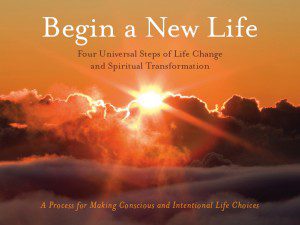 Back in April, I posted on “Begin a New Life,” the spiritual growth program developed by Rev. Mark Pendleton. As I mentioned in the post, Mark had agreed to come out to Dawson Creek and offer a workshop on the program. Mark made it out here a week and a half ago and gave an excellent presentation, followed the next day by a sermon on the gradual progress of spiritual reformation.
Back in April, I posted on “Begin a New Life,” the spiritual growth program developed by Rev. Mark Pendleton. As I mentioned in the post, Mark had agreed to come out to Dawson Creek and offer a workshop on the program. Mark made it out here a week and a half ago and gave an excellent presentation, followed the next day by a sermon on the gradual progress of spiritual reformation.
Starting from the presentation last week, we’ve launched a six-week program following the steps of the “Begin a New Life” program. Our Sunday sermons will each focus on one of the program’s steps, and we’ve started a Tuesday evening group to talk about our experience with the program.
This past Sunday marked the first sermon in the series, on the first step in the program: examining ourselves. Audio from that sermon is here.
Last night was our first group meeting. We had a good turnout and a good discussion centred around that topic of self-examination. At the meeting, we spent about twenty minutes on our own filling out the “Begin a New Life” worksheets on this first step of examining our lives. The rest of the meeting was spent discussing our experience of going through those worksheets; not focusing on the specific things we discovered within ourselves, but on what it was like to discover those things.
The worksheets are available here, in PDF form. They’re fairly self-explanatory, but Mark did give a helpful example in the workshop of how someone might fill the sheets out. You’ll see on page 2 of the worksheets that there are 4 columns for this first step: actions/words, thoughts, intentions, and will. In the actions / words column, you write down things you’ve done or said in a recent conflict or event that has caused you some concern. So, for example, someone might write down, “Fought with wife,” as an action. Under this, he’d maybe write, “Said her idea was stupid,” and then further down in the same column, “Said ‘That’s ridiculous!'” In the next column over, the “thoughts” column, he writes down what he was thinking at the time he was doing those actions and saying those things. So, next to “fought with wife,” he might write, “She deserves whatever she gets; she has no write to talk to me that way; etc.” Next to “said her idea was stupid” he might write “her idea IS stupid,” as that’s what he was thinking at the time. Next to “that’s ridiculous” he might write, “she’s a #$*@!” Moving on to the third column, you write next to those actions and thoughts, what the intention was behind them – e.g. behind saying and thinking her idea was stupid might be the intention of putting her down. Behind the action “fought with wife” might be the intention of “take revenge.” Finally, the fourth column is the will column. Here you write down what you really want behind those actions – e.g., “that she completely submit her will to mine.”
The final part of this first step, found on page 4, is to offer a prayer to the Lord – that He be merciful, and that He change our hearts.
The process can bring out some pretty dark things, since every one of us has some pretty dark desires, whether we’re aware of it or not. In itself this step would be pretty depressing; but the hope with this process is that we find a way to move out of that selfish will into a new will – what Paul calls putting off the old man and putting on the new. This first step alone doesn’t accomplish that, but it paves the way for it.












